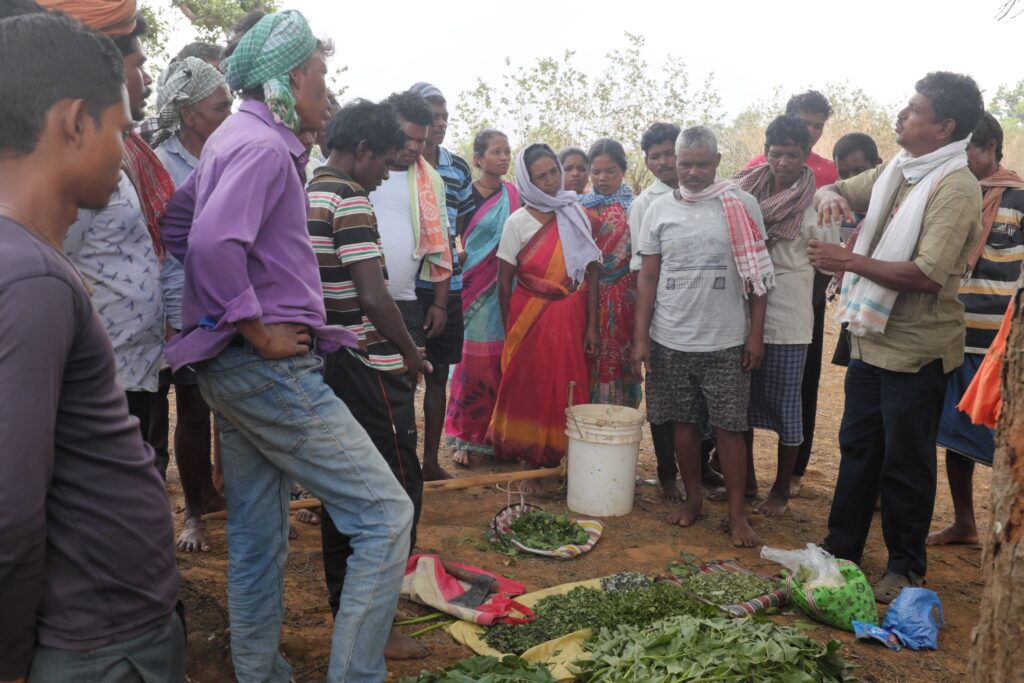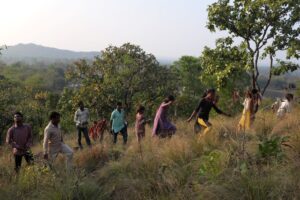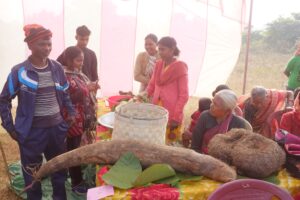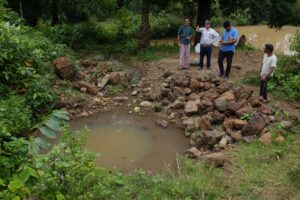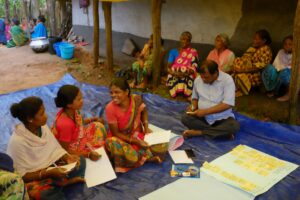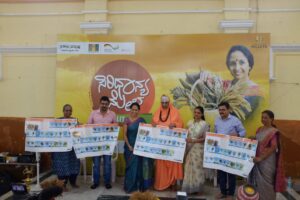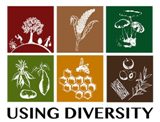On the 12th of June a training program on mixed cropping, sustainable agriculture and organic inputs was organized in the Nagesia village of Orsa Pat Chirchiri Toli, Orsa Panchayat, Mahuadanr Block, Latehar District, Jharkhand. The Training was conducted by resource person Bhairab Saini, facilitated by Rohan Mukerjee from Keystone Foundation and chaired by the Traditional Gram Pradhan of Orsa Panchayat, Narendra Nagesia. The program involved 48 men and women participants from Chirchiri Tola and neighbouring hamlets.
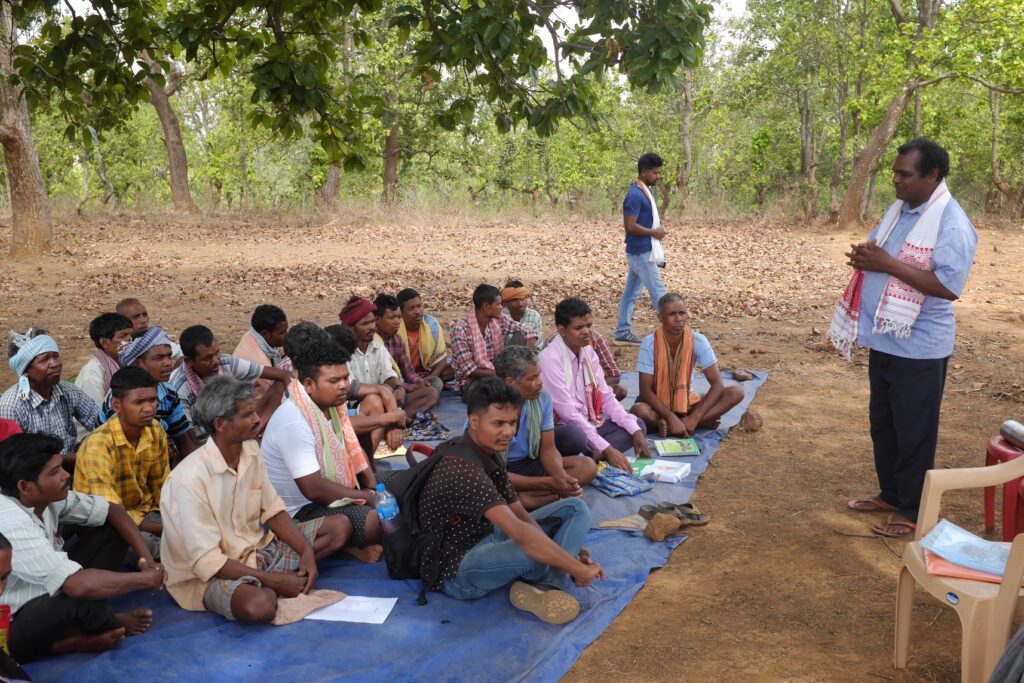
The resource person for the training Bhairab, is a farmer himself, and hailing from Panchal village, Bankura District, West Bengal and since 2004 he has been actively involved in the promotion of organic and ecological agriculture practices and conservation of traditional seeds.
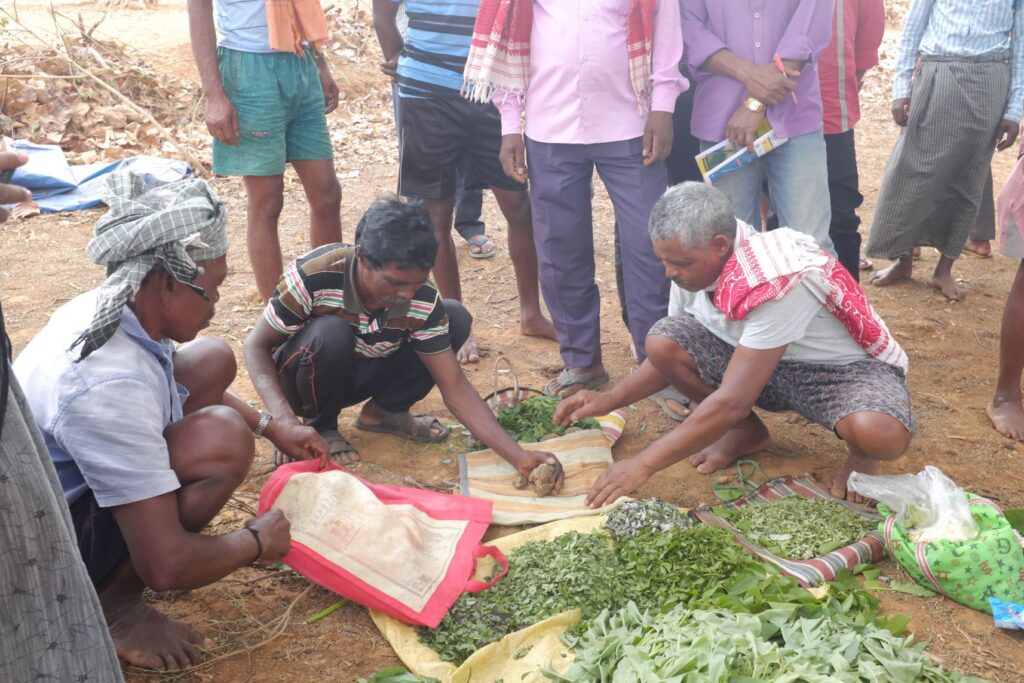
In January 2023 we conducted an introductory training on organic agriculture practices and many of the participants from that event were also present for this training. Narendra Nagesia welcomed all participants and shared his thoughts on the status of agriculture and farming in Orsa Pat and the need to adopt a more sustainable approach. He shared that hardly 10 years ago a majority of the households in Orsa Pat were still producing their own food, cultivating traditional crops like millets, maize, pulses and vegetables with the use of only natural inputs like manure. But since then there has been a shift to commercial agriculture which has seen a majority of the lands moving away from the control of the farmers to the traders who lease them for chemical intensive commercial farming. This is having long term impacts on soil health, biodiversity and has also resulted in a reduction in food production by families to meet their own needs. They now largely depend on market bought food items and PDS rations. This is taking a toll on their health and there is an urgent need to move away from chemical intensive farming and shift back to traditional agricultural practices and adopt organic and natural farming methods. He lauded the efforts being made to spread organic farming and traditional mixed cropping practices through training programs and initiatives like seed distribution to farmer families. At the same time he pointed out to the participants that such programs and initiatives would be of no use unless the farmers come forward to put into practice what they are learning. The participants assured that they were keen to learn about sustainable and organic farming practices and put them into practice in their lands. Sikander Nagesia from Chiro Nawa Toli shared that he had used the Jeev Amrit he had learned to make in the previous training in his Garlic fields and the crop had done well.
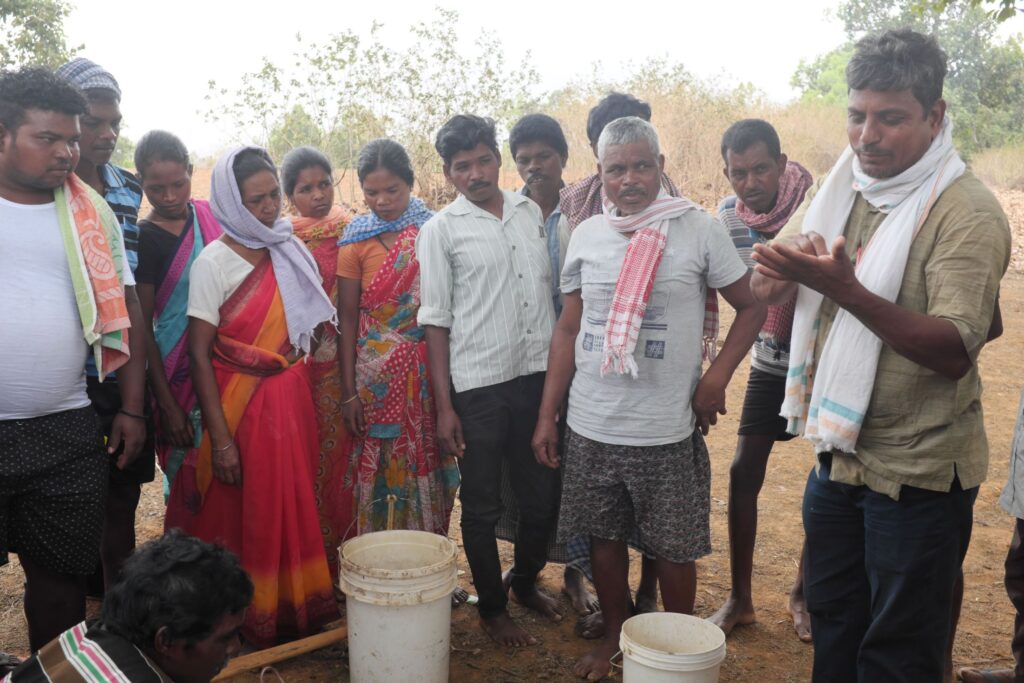
Bhairab shared that he was also a farmer and in the past he was also carrying out chemical intensive modern farming. But after learning about the negative impacts of this form of farming through his association with Dr. Debal Deb he adopted and started promoting organic farming practices from 2004 onwards. He pointed out that in the villages of Bankura where he comes from Chemical farming has been carried out for over 50 years and this has taken a tool not only on the soil and environment but on people’s health with people falling sick a lot and an indicator of this being the large number of medical shops in his village. He stressed that if we use poison to grow our crops then we get poison in our food which in the long run takes a toll on our health. He also talked about corporate control of seeds which is promoting monocropping and hybrid seeds as a result of which farmers are losing their traditional seeds and getting more and more dependent on these corporates for seeds and a variety of other inputs. He stressed that our ancestors had control over their seeds and did not need to go to the market to purchase them. He emphasized that farmers should have rights and control over their seeds and this is the purpose of his seed conservation efforts and his seed bank through which he is returning desi seeds to farmers to cultivate in their own lands. He also lauded the rich crop diversity of the Nagesia people and their traditional mixed cropping practices still found in their Badi / Homestead plots. He highlighted some of the many benefits of mixed cropping practices like provision of a diverse variety of crops that makes for a diverse and nutritious diet, resilience to pest and disease attacks, improving and sustaining soil health. He also talked about current mixed cropping initiatives like Multilayer farming. Multilayer farming is a type of polyculture that involves growing multiple crops in a single area which is used to optimize the use of land and improve the quality of the soil. Bhairab is working for the establishment of multilayer farming plots in various parts of West Bengal and Jharkhand and is working with 3 farmers to establish Multilayer farming plots in Orsa Pat. He stressed on the need to reduce the time land is left barren which helps conserve the soil and maintain soil health. Given issues with water scarcity in the region he recommended focusing on crops that need less water like their traditional crops which included little millet, sorghum, finger millet and maize.
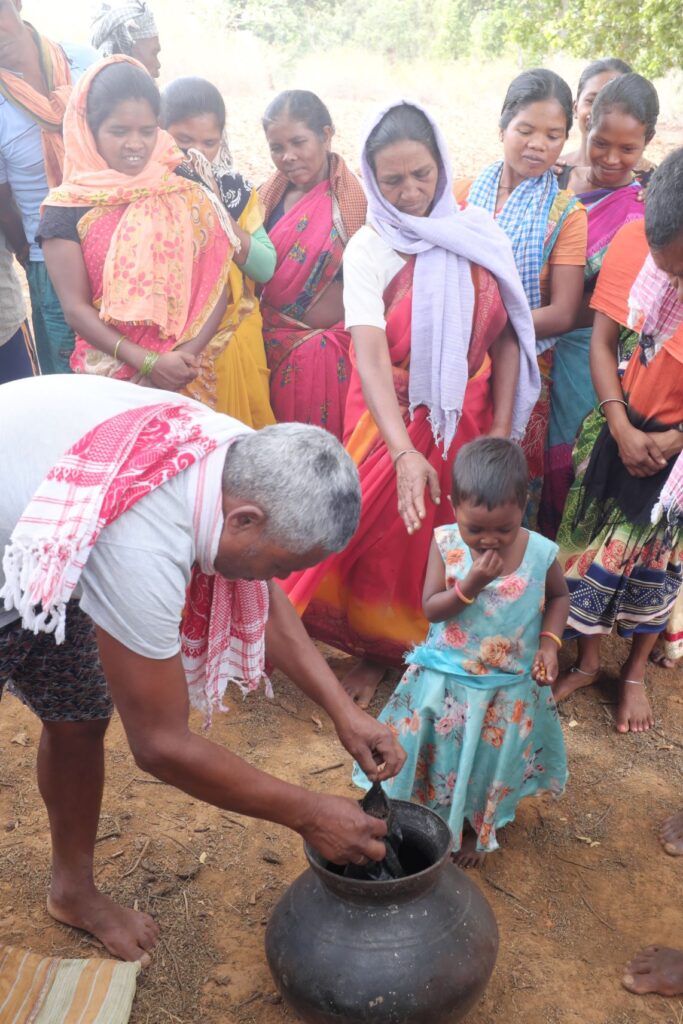
Bhairab then moved on to discussion and demonstrations of preparation of a variety of organic fertilizers and pesticides that are an integral part of organic farming practices. This involved the participants themselves carrying out some of the steps involved in the preparation of these inputs. Various materials had been made available to enable the preparation of the different inputs and these included 200 liter drums, earthen pots, fresh and dry cow dung, cow urin, different leaves that livestock don’t eat, jaggery, besan. The men and women participants got busy preparing and mixing the different ingredients. This practical approach was found to be more engaging and the participants got involved in the different exercises and asked a variety of questions relating to the different inputs, their preparation and application. Two of the principal ingredients especially for the organic fertilisers were cow dung and cow urine and since there were a substantial number of cattle in this area the farmers would not have difficulty sourcing these vital ingredients. One of the main organic fertilisers the participants practiced making was Jeev Amrit which uses fresh cow dung, cow urine, gud / jaggery, besan / gram flour and a little soil from termite mounds. Bhairab said that since they if they apply jeev amrit regularly to their soil for a few year then the quality of the soil and its overall health with improve and they would not need to apply large quantities of inputs.

